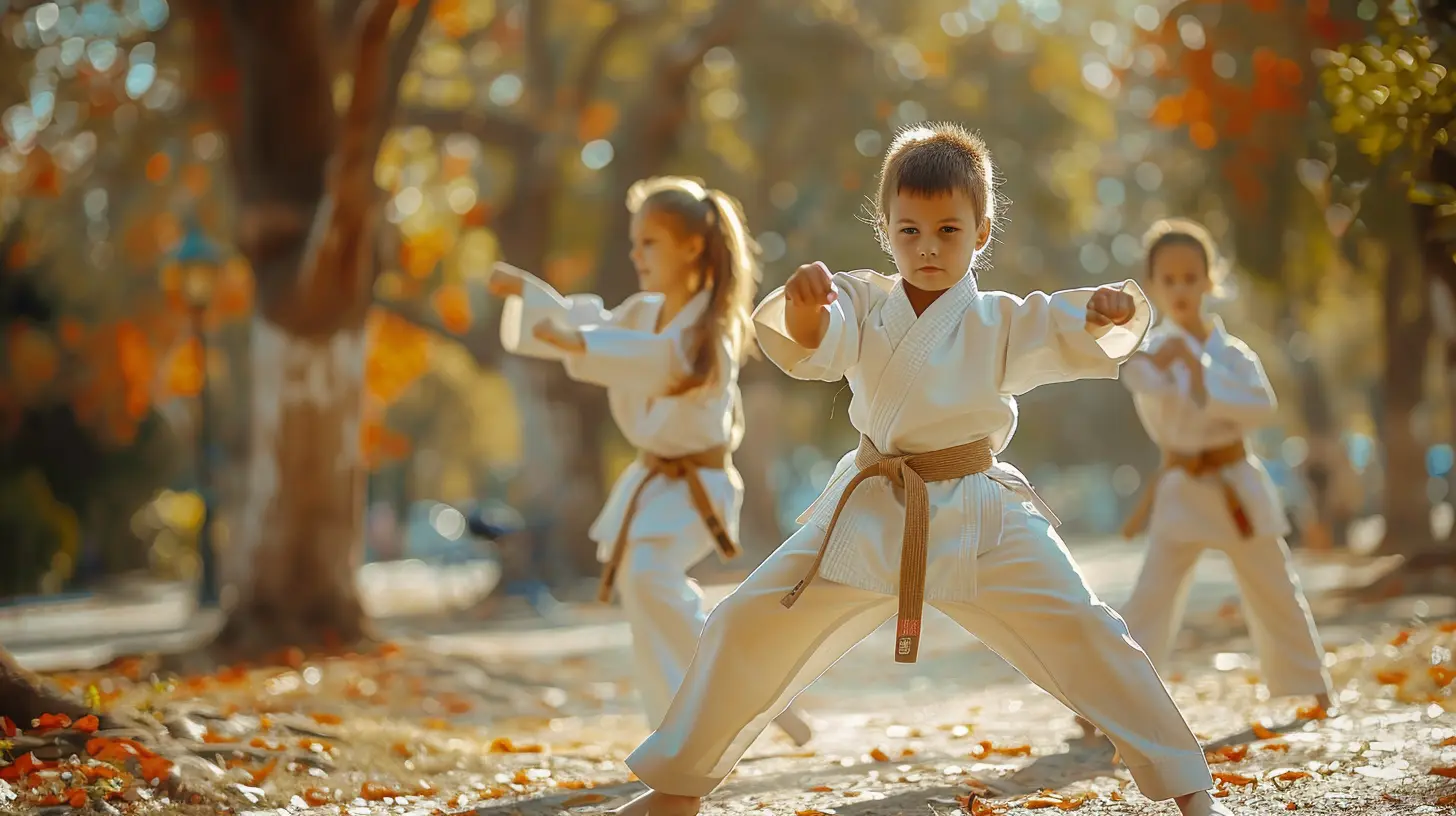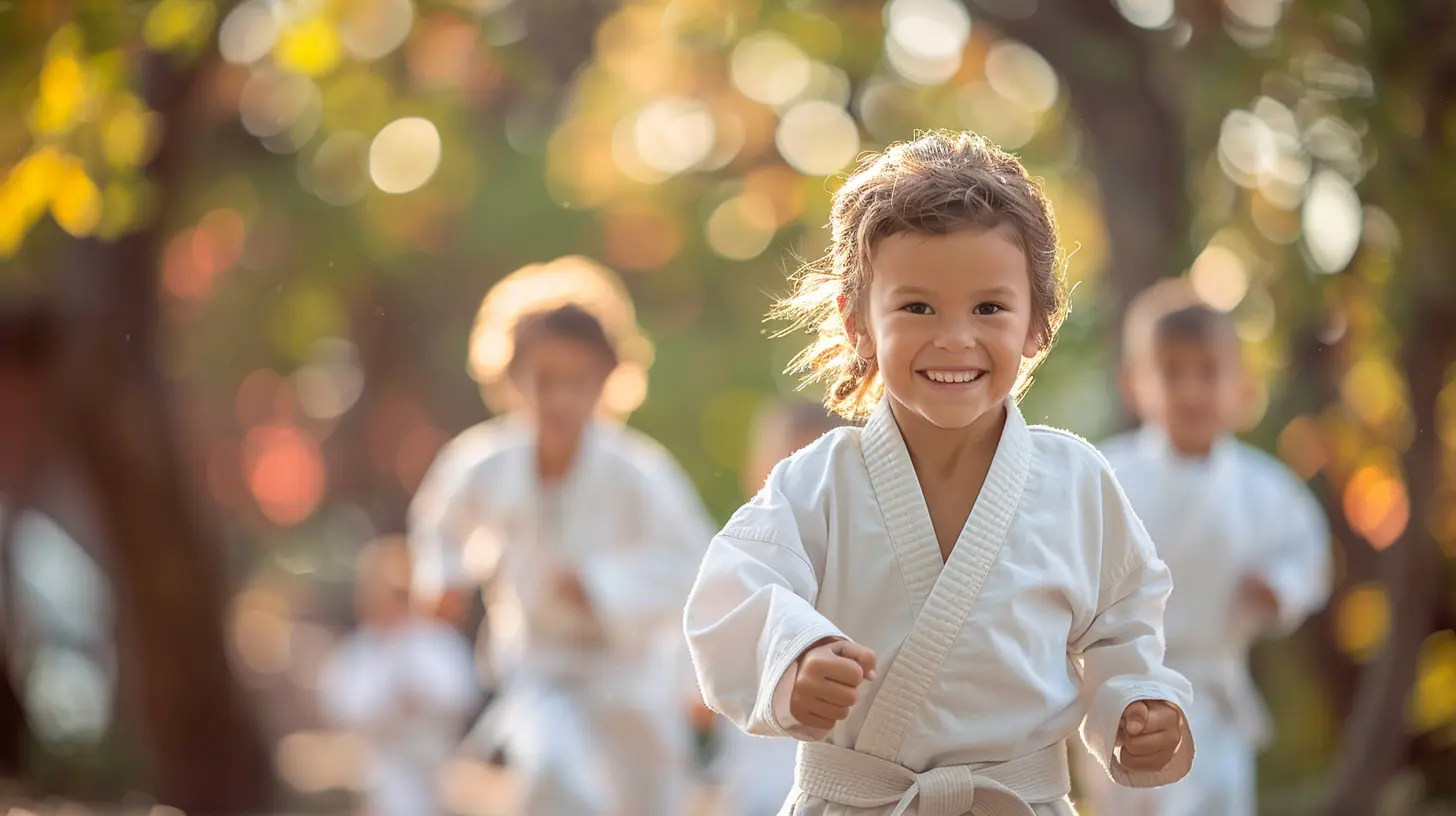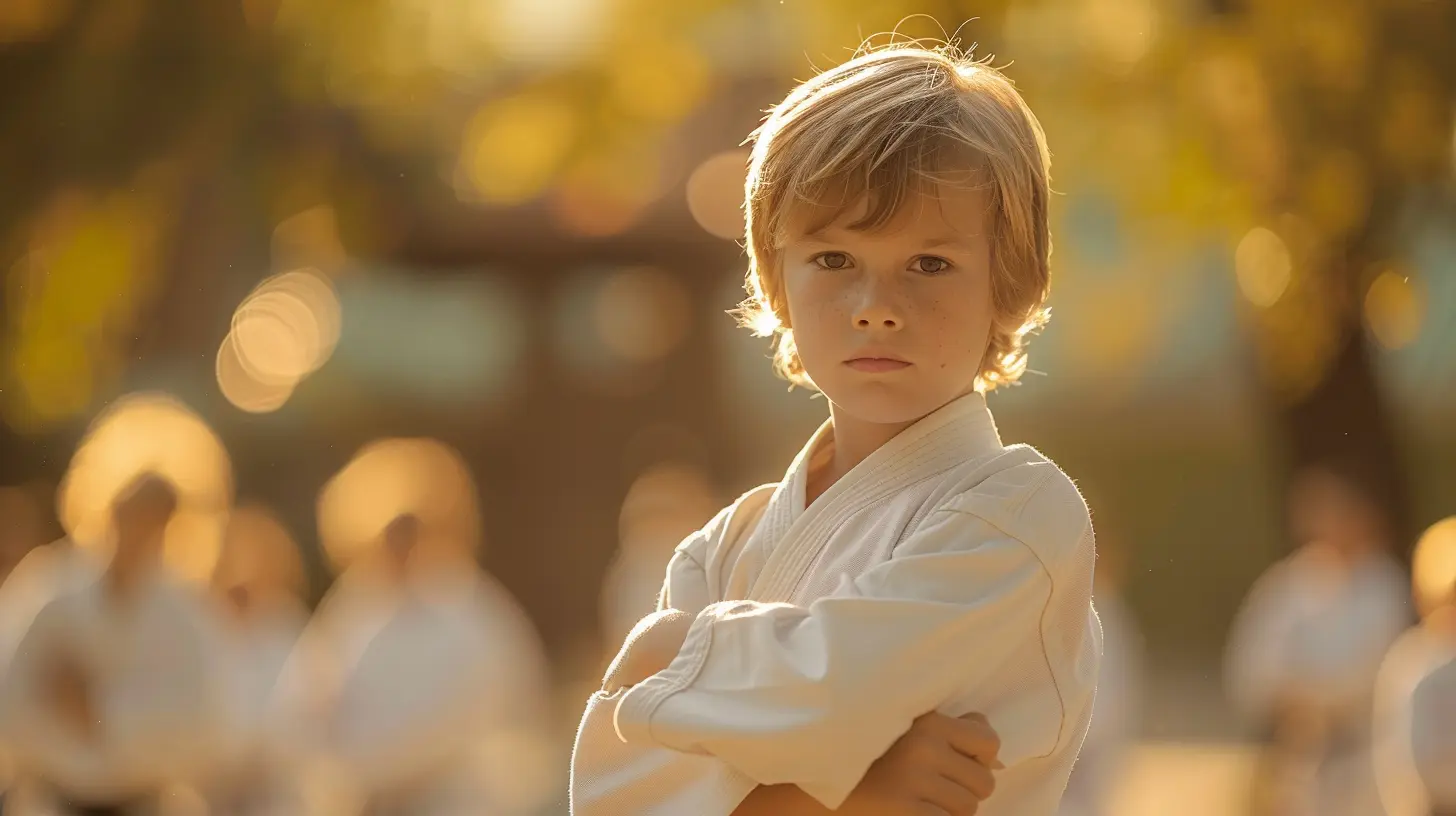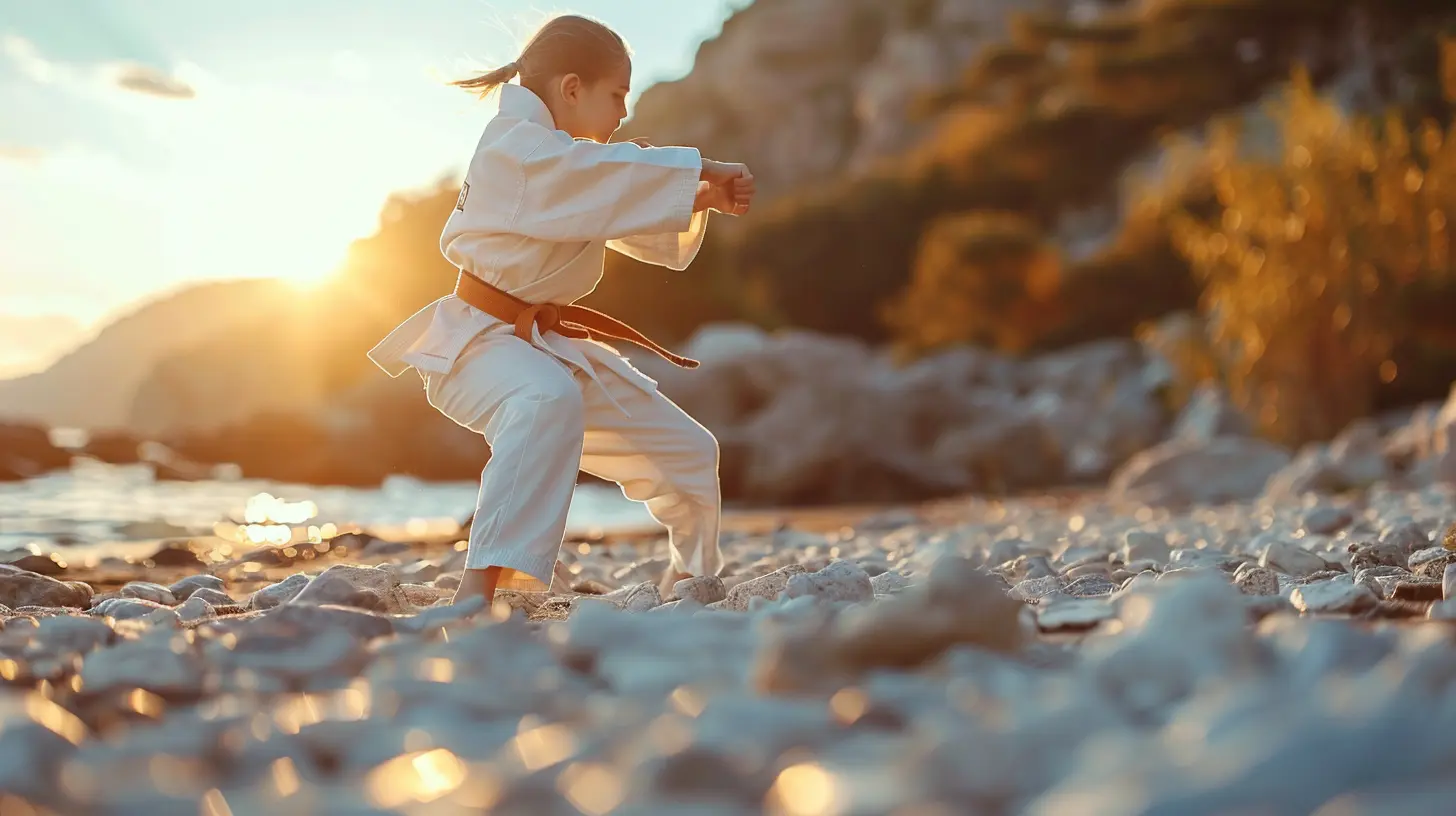4 February 2025
When it comes to choosing after-school activities for kids, the options can be overwhelming. Should they pick up a team sport like soccer? Or delve into the arts, like painting or music? What about something a little out of the box—something that challenges your child physically and mentally at the same time? Enter martial arts. Yep, I'm talking about the age-old practice of punches, kicks, and discipline-packed routines. But martial arts as an after-school activity is so much more than just breaking boards or mastering impressive high kicks—it’s about fostering discipline, building fitness, and shaping character. Intrigued? Let’s dive into why martial arts might just be the ultimate after-school activity for your child.

Why Martial Arts Is a Game-Changer for Kids
Think of martial arts as a two-in-one deal. It’s like getting a gym membership and life coaching rolled into one for your child. Sounds amazing, right? But what makes martial arts so unique compared to, say, basketball or piano lessons?First, martial arts isn't just about self-defense. Sure, your kid might learn how to block a punch or escape a sticky situation, but that's just the tip of the iceberg. Martial arts focuses on instilling values like respect, perseverance, and self-control. Plus, it’s an incredible way to channel all that after-school energy (because let’s be honest, kids are like little balls of boundless energy waiting to explode).
Let’s break it down a little more, shall we? 
Building Discipline: The Heart of Martial Arts
One of the standout benefits of martial arts is the emphasis on discipline. We’re not just talking about the kind of discipline that gets your child to clean their room or finish their homework (though, hey, that would be a bonus, right?). Martial arts teaches something deeper—a form of self-discipline that stays with them for life.In classes, routines are structured and repetitive. Students are expected to follow directions, respect their instructors, and stay focused—no distractions allowed. Over time, this structure naturally flows into their everyday lives.
Think about it: in martial arts, kids practice the same moves over and over again to master them. It’s kind of like life. Whether it’s tackling a tough math problem or learning how to ride a bike, persistence is key. Your child learns that progress doesn't happen overnight—it takes patience and hard work. And isn’t that a lesson we all want our kids to learn? 
Boosting Fitness: No Couch Potatoes Here
Gone are the days when kids could spend hours climbing trees or running around the neighborhood. These days, it’s all too easy for children to become screen zombies. Martial arts gives them a much-needed escape from the couch (or gaming chair) and gets their bodies moving in all the best ways.Martial arts is a full-body workout. It improves flexibility, strengthens muscles, and enhances cardiovascular health. Unlike some other activities that focus on one specific skill (like running in track), martial arts challenges multiple areas of fitness. Balance? Check. Coordination? Double-check. Stamina? You bet.
Oh, and let’s talk about those endorphins. Physical exercise releases those happy hormones that can help reduce stress and boost your child’s mood. So, not only are they staying fit, but they’re also keeping their mental health in check. It’s a win-win. 
Confidence 101: Because Every Kid Deserves to Feel Like a Superhero
There’s something truly empowering about knowing how to throw a punch or execute a perfect roundhouse kick. Does it mean your kid will come home and turn into the next Bruce Lee? Probably not, but hey, you never know!What martial arts does do is help kids build unshakable confidence. Imagine this: your child steps into class feeling unsure and maybe even a little intimidated. But after weeks or months of practice, they’ve earned their first belt and realized, “Hey, I’m stronger than I thought!”
The belt system itself is a fantastic confidence booster. It gives kids tangible goals to work toward and a sense of accomplishment every time they earn a new belt. Whether it’s a yellow belt or a black one, each step up is proof of their hard work.
The confidence kids gain in martial arts often spills into other areas of life. They’re more likely to speak up in class, make new friends, and even tackle challenges head-on. Who wouldn’t want that for their child?
Martial Arts Teaches Respect (and Not Just for Instructors)
Respect is a cornerstone of martial arts. From bowing before entering the dojo to addressing their instructors as “sir” or “ma’am,” kids learn early on that respect is non-negotiable.But here’s the kicker: it's not just about respecting authority figures. Kids in martial arts also learn to respect themselves and their peers. Whether it’s sparring with a partner or helping someone perfect a move, martial arts fosters an environment of teamwork and mutual respect.
And let’s face it—teaching kids to be kind and respectful is more important than ever in today’s world.
Social Skills: Making Friends Beyond the Playground
Martial arts might seem like a solo activity, but it’s more social than you might think. Kids interact with instructors and classmates during every lesson. They learn how to communicate effectively, cooperate in pairs, and even cheer each other on.For shy kids who might struggle in team sports, martial arts is a breath of fresh air. It’s a structured environment where they can build social skills without the pressure of being part of a big team. And for more extroverted kids? Well, they just get another chance to make more friends.
Safety First: Debunking Myths About Aggression
A common misconception about martial arts is that it encourages aggression. Let me clear that up right now—it doesn’t. In fact, it’s quite the opposite.Martial arts teaches kids how to manage their emotions and resolve conflicts peacefully. They learn that physical moves are a last resort—only used in self-defense. Think of martial arts training as giving kids tools to walk away from fights, not start them.
Plus, instructors emphasize the importance of control. Sure, your child might learn how to throw a punch, but they’ll also learn when not to. Self-control is one of the first and most important lessons taught in martial arts.
Choosing the Right Martial Art
Alright, you’re sold on the idea of martial arts. But now what? With so many styles out there, how do you decide which one is the best fit for your child? Here are a few to consider:- Karate: One of the most well-known forms of martial arts, karate focuses on striking techniques and discipline.
- Taekwondo: Known for its high kicks and agility-focused moves, taekwondo is great for building flexibility.
- Judo: A grappling-based style that emphasizes using an opponent’s strength against them.
- Brazilian Jiu-Jitsu: Perfect for kids who enjoy ground-based techniques and want to learn effective self-defense skills.
- Kung Fu: A traditional Chinese martial art that’s as graceful as it is powerful.
Each style has its own focus, so it might take some trial and error to find the right fit. Most dojos or martial arts schools will let your child try a class or two before committing.
Wrapping It Up: The Long-Term Benefits
Martial arts isn’t just an after-school activity—it’s an investment in your child’s future. From discipline to fitness, confidence to respect, it checks all the boxes. Plus, it’s a skill that will stick with them for life.So the next time you’re scrolling through a list of after-school programs, think about giving martial arts a try. Who knows? Your child might just find their passion in the dojo. And even if they don’t become a black belt, they’ll definitely gain some pretty awesome life skills along the way.










Matteo Jordan
Martial arts isn't just a fun activity—it's a life changer. Kids learn discipline, respect, and resilience while getting fit. Forget the couch; empower them with skills that build character and promote a healthy lifestyle. Invest in their future—martial arts is the ultimate after-school experience!
March 31, 2025 at 2:31 AM